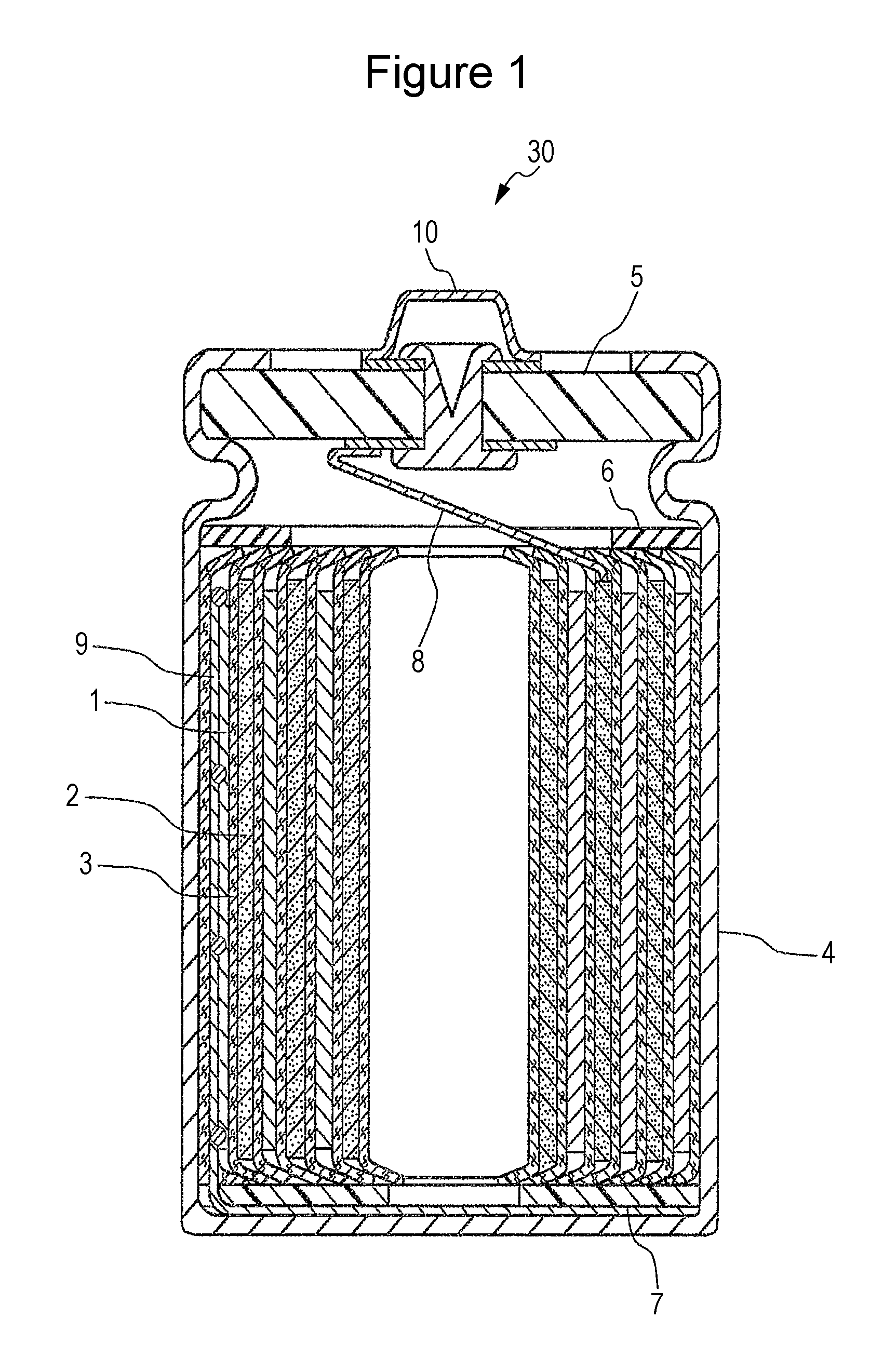Positive electrode for nonaqueous electrolyte secondary battery and nonaqueous electrolyte secondary battery
- Summary
- Abstract
- Description
- Claims
- Application Information
AI Technical Summary
Benefits of technology
Problems solved by technology
Method used
Image
Examples
example 1-1
Preparation of a Positive Electrode Active Material
[0039]Li2CO3 serving as a Li source and an oxide represented by Co3O4 were mixed with each other by using an Ishikawa-type grinder mortar so that the molar ratio of Li to the transition metal element was 1:1. The resulting mixture was heat-treated at 950° C. for 20 hours in an air atmosphere and crushed. As a result, LiCoO2 having an average secondary particle size of about 16 μm was obtained.
[Preparation of a Li-Containing Compound Serving as a Positive Electrode Additive]
[0040]Li2O serving as a Li source and an oxide represented by Fe2O3 were mixed with each other by using an Ishikawa-type grinder mortar so that the molar ratio of Li to the transition metal element was 5:1. The resulting mixture was heat-treated at 600° C. for 12 hours in a nitrogen atmosphere and crushed. As a result, Li5FeO4 having an average secondary particle size of about 10 μm was obtained. A three-pole cell described below was prepared by using a positive e...
example 1-2
[0044]A three-pole cell was prepared as in Example 1-1 except that the positive electrode active material (LiCoO2) and the positive electrode additive (Li5FeO4) were mixed at a mass ratio of 96:4 in preparing the positive electrode. This three-pole cell was assumed to be a three-pole cell A2. The porosity of the positive electrode active material layers in the positive electrode in Example 1-2 was 27%.
example 1-3
[0045]A three-pole cell was prepared as in Example 1-1 except that the positive electrode active material (LiCoO2) and the positive electrode additive (Li5FeO4) were mixed at a mass ratio of 94:6 in preparing the positive electrode. This three-pole cell was assumed to be a three-pole cell A3. The porosity of the positive electrode active material layers in the positive electrode in Example 1-3 was 27%.
PUM
 Login to View More
Login to View More Abstract
Description
Claims
Application Information
 Login to View More
Login to View More - R&D
- Intellectual Property
- Life Sciences
- Materials
- Tech Scout
- Unparalleled Data Quality
- Higher Quality Content
- 60% Fewer Hallucinations
Browse by: Latest US Patents, China's latest patents, Technical Efficacy Thesaurus, Application Domain, Technology Topic, Popular Technical Reports.
© 2025 PatSnap. All rights reserved.Legal|Privacy policy|Modern Slavery Act Transparency Statement|Sitemap|About US| Contact US: help@patsnap.com


